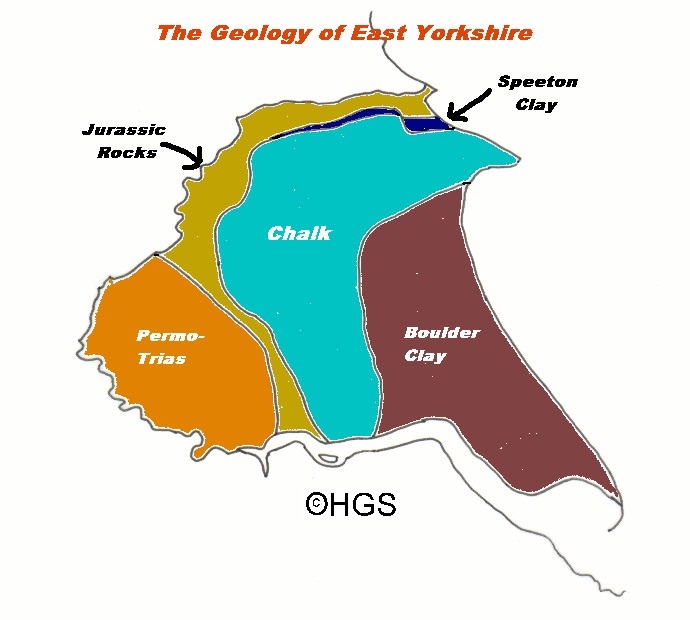
Hull Geological Society

Geology beneath Hull.
There are no outcrops of solid rock in Hull. The nearest solid rock to be found is the Chalk, which makes up the Yorkshire and Lincolnshire Wolds. It is prone to shattering by frost and does not make a very good building stone.
If we were to drill a a deep borehole we would encounter the following rock types:
brown mud containing stones - the "Boulder Clay" deposited by glaciers during the Ice Ages. About 10 to 15 metres thick (thinning towards the west. There may also be some thin localized beds of gravel and peat.
a white hard rock - the Chalk deposited in the late Cretaceous, up to 200 metres thick beneath Hull. The upper parts contain pale grey flints. The top 2 metres may be very soft.
Red Chalk which may be about 1 metre thick
very dark clays deposited in the Late Jurassic.
pale brown limestones and sandstones from the Middle Jurassic.
dark clays deposited in the Early Jurassic
orange clays deposited in desert conditions in the Triassic
You will also drive over the same sequence of rocks if you head west through Cottingham through North Cave to the Vale of York.

Copyright - Mike Horne and Hull Geological Society 2020
Registered Educational Charity No. 229147